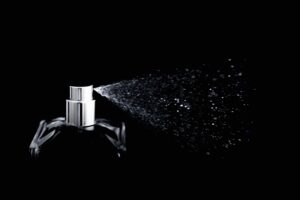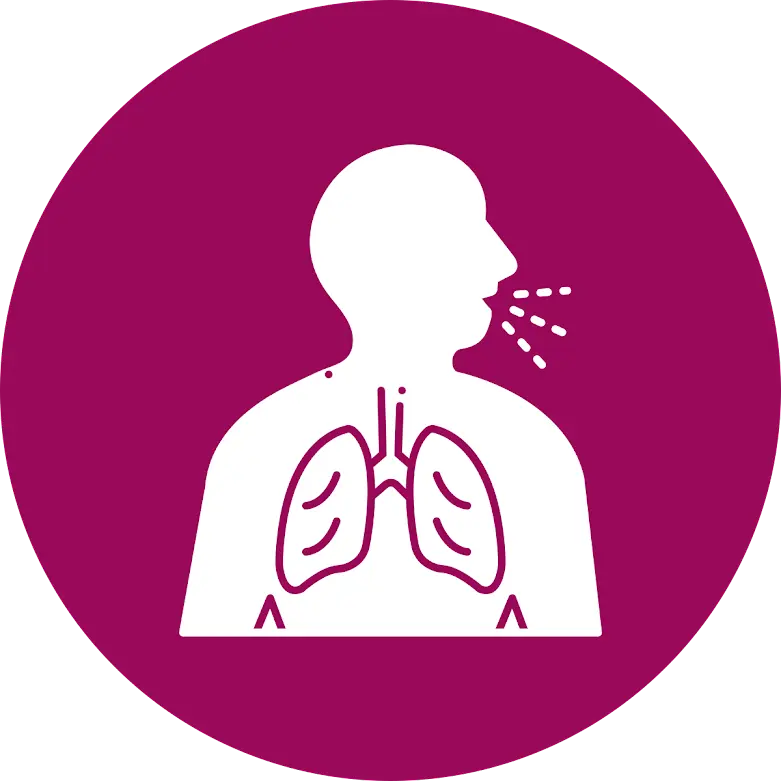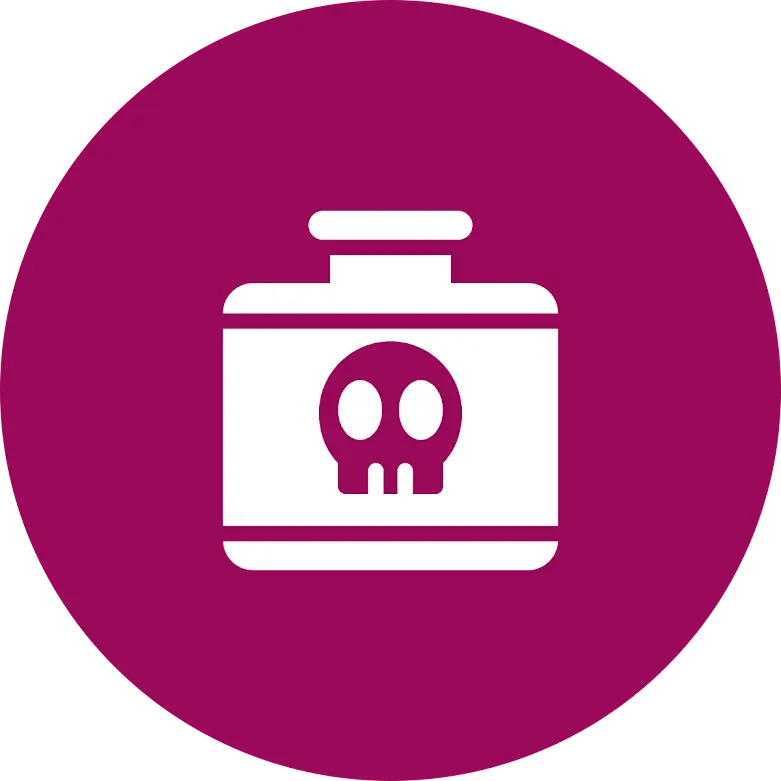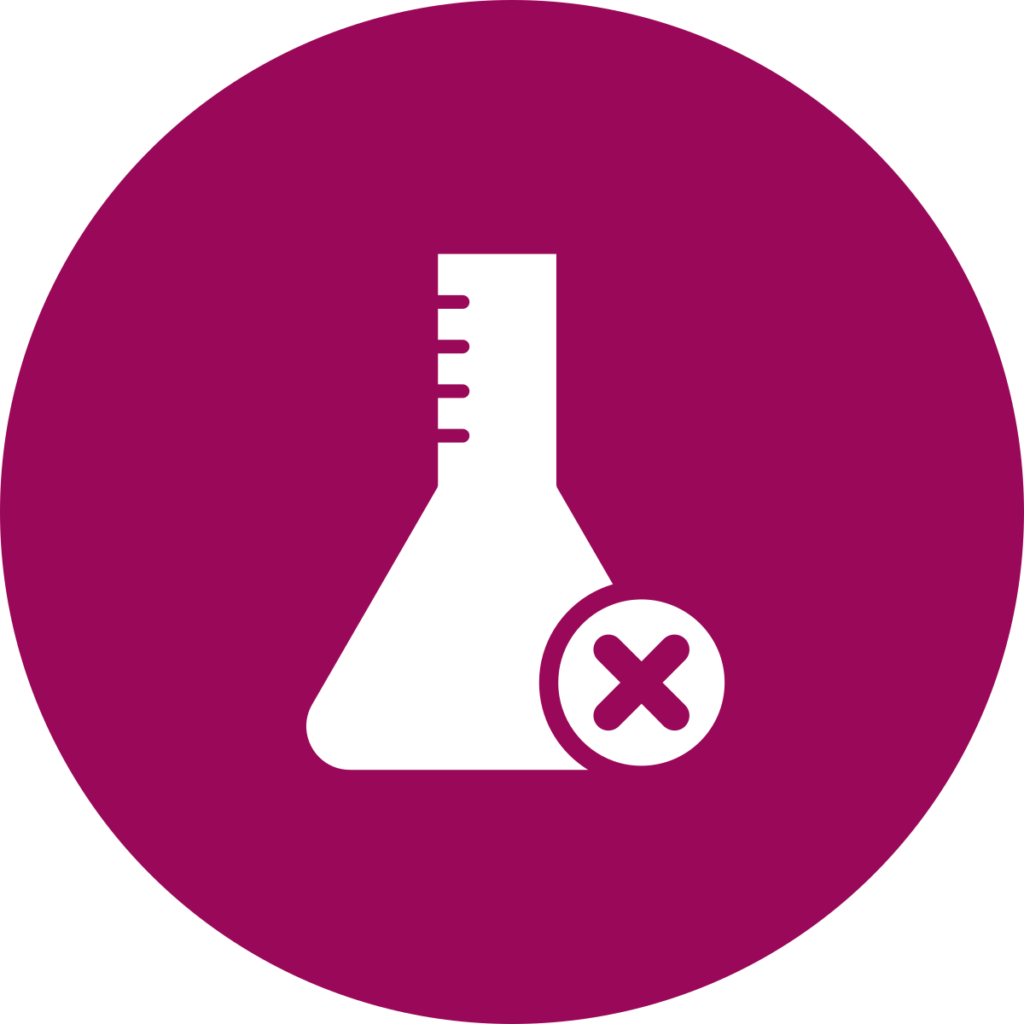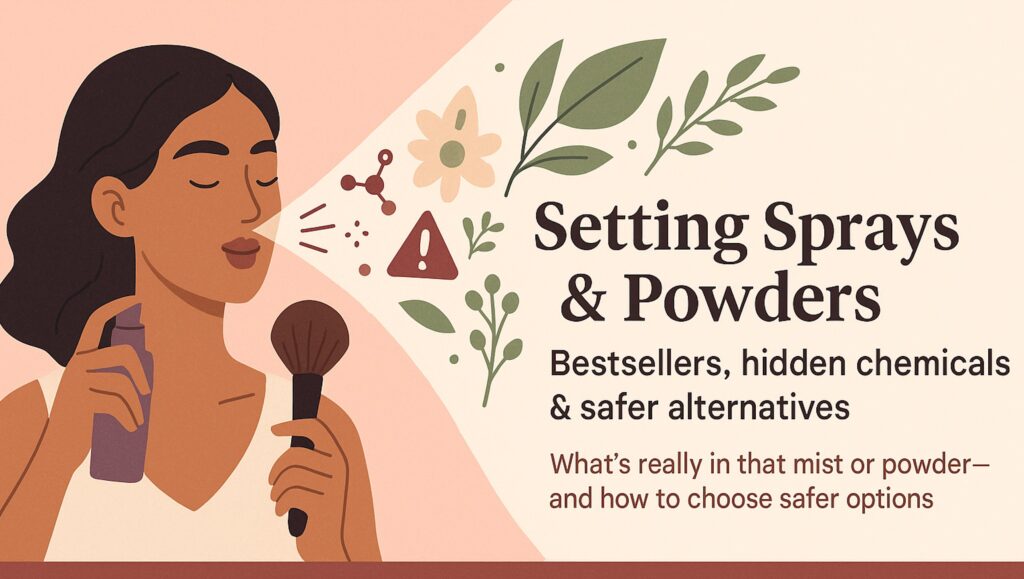
Every day, millions of people reach for setting sprays and powders to complete their makeup routines. These products promise flawless, long-lasting makeup by locking in looks for hours of wear with a few quick spritzes or puffs of powder.
But what’s really in that mist or powder you’re applying to your face? The answer might surprise you. Many popular setting products contain chemicals linked to cancer, hormone disruption, and respiratory harm. In an industry where companies can legally sell products with dangerous ingredients, it’s time to take a closer look at what we’re putting on our skin—and demand better.
The Origins and Current-Day Use of Setting Products
Setting sprays and powders have been around for decades, originally used in the entertainment industry to keep makeup intact during long performances. Nowadays, key consumers are young adults roughly ages 18–34 (Gen Z and Millennials). As social media influencers showcase multi-step routines and makeup trends continue to evolve, these products have become mainstream essentials in daily beauty regimens. From sprays that create dewy finishes to powders that control oil and create matte bases, the variety of formulations has exploded—but so has our exposure to potentially harmful chemicals.
What Do Setting Sprays and Powders Actually Do?
- Setting powders lock in your makeup and absorb excess oil to control shine. They also smooth out texture by minimizing the appearance of pores and fine lines.
- Setting sprays seal makeup by creating a light film that holds everything in place. They can refresh the skin by adding hydration and reducing cakiness.
Both products promise to extend the wear of your makeup throughout the day. But what’s the cost to your health?
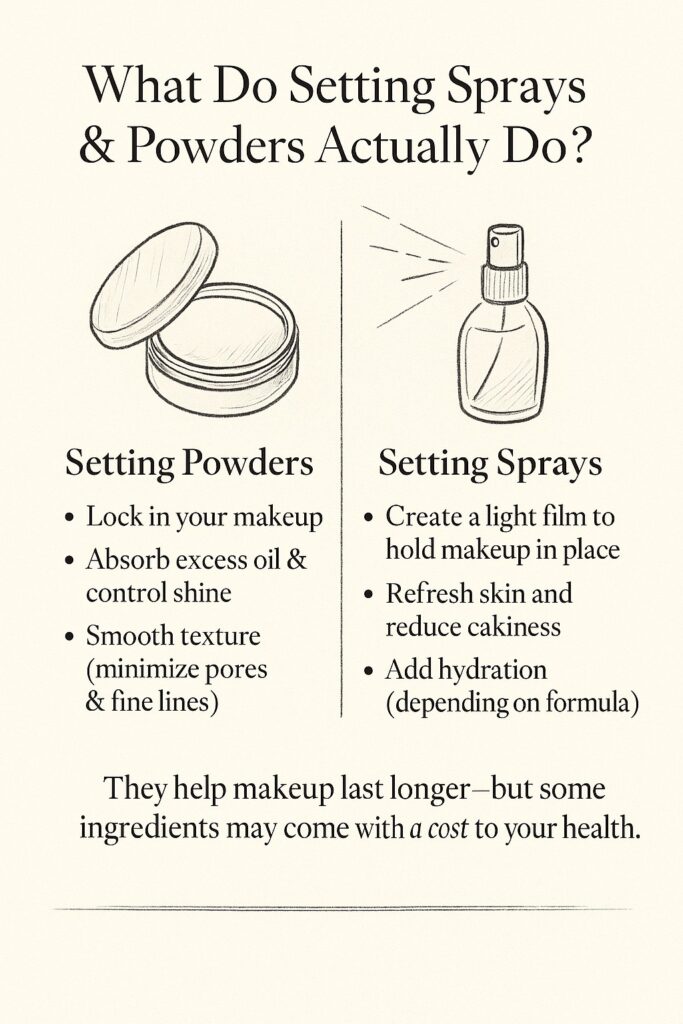
The Hidden Dangers in Your Makeup Bag
You’d be shocked to discover that some of the most popular products marketed to you can be the most dangerous. Why? Because companies can. The reality is stark: due to a largely unregulated beauty and personal care industry, companies can and do legally sell cosmetics with chemicals linked to cancer, birth defects, and reproductive harm.
We analyzed the top 8 most popular setting sprays and powders sold at Sephora, the world’s leading beauty retailer, to uncover what’s really in these bestselling products. Here’s what we found:
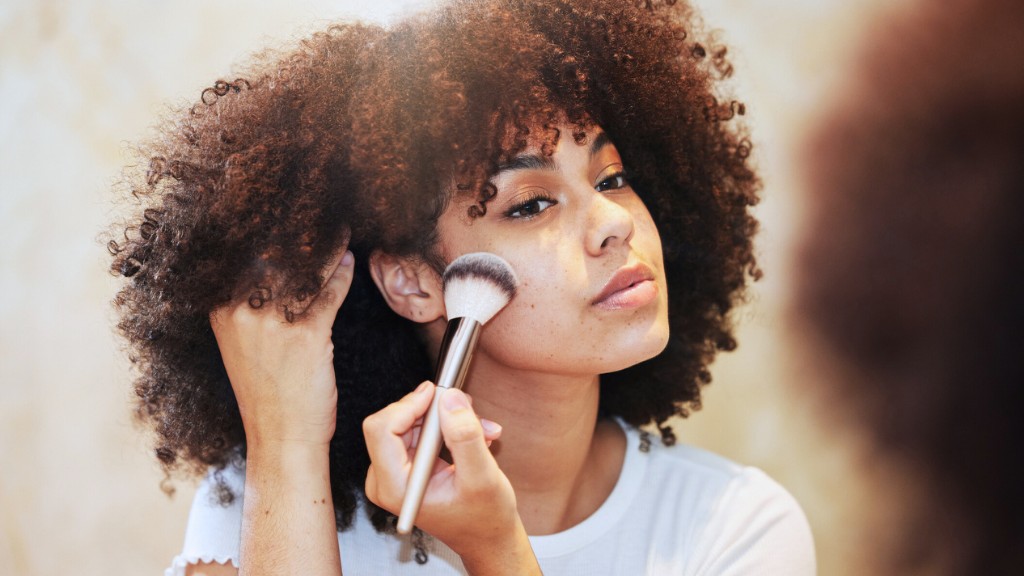
Table 1: Popular Setting Powders and Ingredients of Concern
| Product Name | Ingredients of Concern | ||||
|---|---|---|---|---|---|
| Talc | Parabens | Titanium Dioxide | Phenoxyethanol | Fragrance | |
| Charlotte Tilbury’s Airbrush Flawless Finish Blurring and Setting Powder | 🔴 | 🔴 | 🟠 | – | – |
| Patrick Starrr’s Mini Ultimate Blurring Setting Powder | 🔴 | 🔴 | – | 🟡 | – |
| Huda Beauty’s Easy Bake Blurring Loose Baking & Setting Powder | 🔴 | – | – | – | 🔴 |
| Sephora’s Translucent Loose Setting Powder | – | 🔴 | – | – | – |
Legend
- 🔴 Higher concern (cancer / hormone disruption)
- 🟠 Potential respiratory / irritation
- 🟡 Allergen / sensitizer
- Talc: Talc is a naturally occurring mineral substance used in a variety of cosmetic and personal care products, from baby powders to eye shadows. Some talc may contain the known carcinogen asbestos. Therefore, it should be avoided in powders and other personal care products, unless it is known to be asbestos-free. Even asbestos-free talc should be avoided in the pelvic areas.
- Parabens: Parabens are a group of chemicals that prevent the growth of mold, bacteria and yeasts. They are often added to cosmetics and personal care products to increase shelf-life and stability.. Some of the most common ones are: ethylparaben, butylparaben, isobutylparaben, isopropylparaben, methylparaben, and propylparaben. Parabens can be absorbed through skin, blood, and the digestive system and have been linked to hormone disruption, skin cancer, and developmental and reproductive toxicity.
- Titanium Dioxide: Titanium dioxide (TiO2) is used in a variety of personal care products, including sunscreens, pressed powders, and loose powders, as a UV filter or whitening agent. In lotions and creams (dermal exposure), it is not a risk for adverse health effects. However, when titanium dioxide is inhalable—as it may be when in powder form—it is considered a possible carcinogen.
- Phenoxyethanol: Phenoxyethanol is used as a preservative in cosmetic products and also as a stabilizer in perfumes and soaps. Exposure to phenoxyethanol has been linked to reactions ranging from eczema to severe, life-threatening allergic reactions. Infant oral exposure to phenoxyethanol can acutely affect nervous system function.
- Fragrance: Many products list “fragrance” on the label, but very few name the specific ingredients that make up a “fragrance.” This lack of disclosure prevents consumers from knowing the full list of ingredients in their products. Fragrance or ‘parfum’ can consist of any of approximately 4,000 chemicals used by the fragrance industry to formulate scents for use in personal care products, cleaning products, perfumes, and home care products. Many fragrance chemicals are linked to cancer, birth defects, hormone disruption, and other chronic health problems.
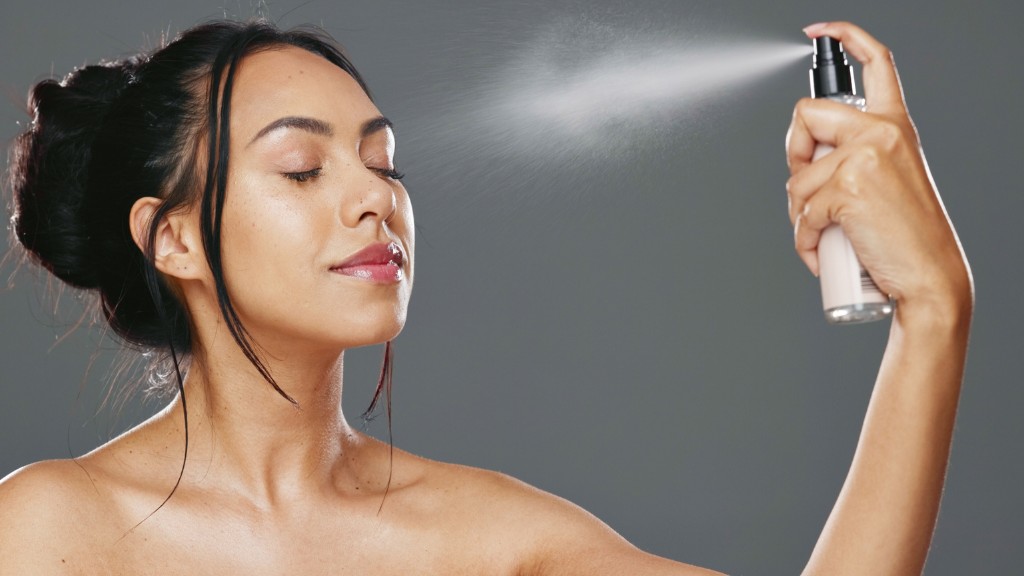
Table 2: Popular Setting Sprays and Ingredients of Concern
| Product Name | Ingredients of Concern | |||
|---|---|---|---|---|
| Butane | Isobutane | Phenoxyethanol | Fragrance | |
| Patrick Starrr’s Mini On ‘Til Dawn Mattifying Waterproof Setting Spray | 🔴 | 🔴 | 🟡 | – |
| Anastasia Beverly Hills Dewy Set Hydrating Setting Spray | – | – | 🟡 | – |
| Patrick Starrr’s On ‘Til Dawn Glitter Waterproof Setting Spray | 🔴 | 🔴 | 🟡 | 🔴 |
| Charlotte Tilbury Airbrush Flawless Hydrating & Waterproof Setting Spray | – | – | 🟡 | 🔴 |
Legend
- 🔴 Higher concern (cancer / hormone disruption)
- 🟠 Potential respiratory / irritation
- 🟡 Allergen / sensitizer
- Butane and Isobutane: Both are hydrocarbon gases often used as a propellant in aerosolized products like hair sprays, deodorants, and setting sprays. Butane and isobutane are known human carcinogens and are prohibited for use in cosmetic products in the European Union if they contain a level of the carcinogen 1,3-butadiene that is equal to or greater than 0.1% by weight.
- Phenoxyethanol: Phenoxyethanol is used as a preservative in cosmetic products and also as a stabilizer in perfumes and soaps. Exposure to phenoxyethanol has been linked to reactions ranging from eczema to severe, life-threatening allergic reactions. Infant oral exposure to phenoxyethanol can acutely affect nervous system function.
- Fragrance: Many products list “fragrance” on the label, but very few name the specific ingredients that make up a “fragrance.” This lack of disclosure prevents consumers from knowing the full list of ingredients in their products. Fragrance or ‘parfum’ can consist of any of approximately 4,000 chemicals used by the fragrance industry to formulate scents for use in personal care products, cleaning products, perfumes, and home care products. Many fragrance chemicals are linked to cancer, birth defects, hormone disruption, and other chronic health problems.
The Accumulation Problem
While companies may claim that small percentages of these ingredients are safe, the truth is more complex. These chemicals accumulate in our bodies over time through repeated daily use. When you consider that the average person uses multiple beauty products each day, the cumulative exposure becomes significant and concerning.
The cosmetics title of the Federal Food, Drug and Cosmetics Act has not been amended significantly since it was enacted more than 80 years ago, providing the FDA with virtually no power to regulate the safety of an estimated $100 billion domestic cosmetic industry. This lack of oversight means companies face few consequences for using harmful ingredients.
Safer Alternatives Exist
The good news? The safer cosmetics industry is growing, and you have options. If you’re looking for ingredient transparency and clean, sustainable beauty, retailers and brands like Credo Beauty and Crunchi offer setting products formulated without harmful chemicals.
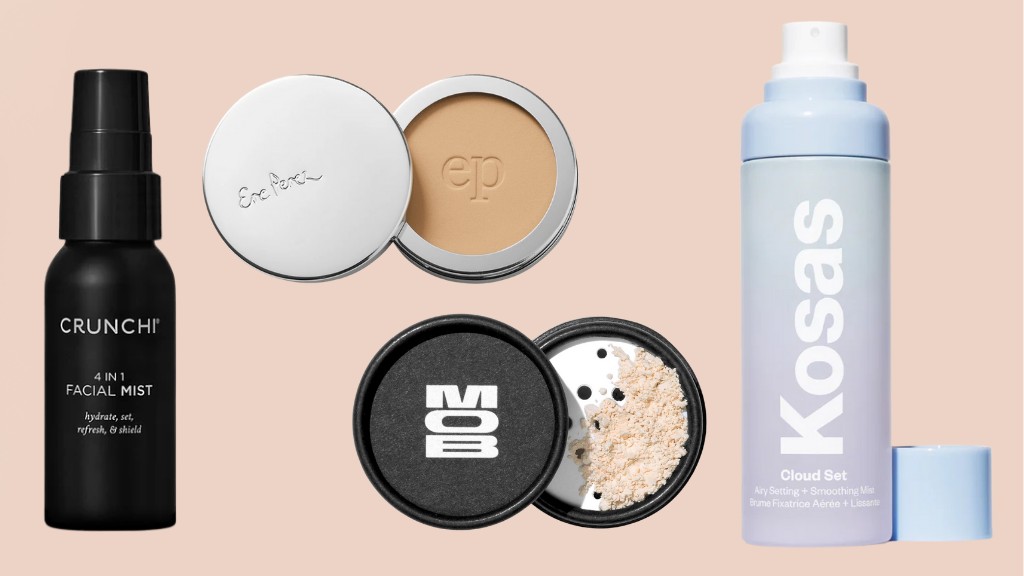
Safer Setting Sprays and Powders to Consider
- Ere Perez Corn Setting Powder
- MOB Beauty Blurring Loose Setting Powder
- Kosas Cloud Set Airy Setting + Smoothing Mist
- Crunchi 4-in-1 Facial Mist
Important note: While these options align with cleaner formulation standards, always check for personal allergens and do your own research, especially if you have sensitive skin.
When Should You Actually Use Setting Products?
Setting sprays and powders aren’t essential for everyone. Consider your needs:
When they’re worth it:
- Long days or special events (8+ hours of wear)
- Managing oily skin
- Photography or stage makeup
- Hot, humid weather conditions
When you can skip them:
- Minimal makeup days (just tinted moisturizer or concealer)
- Short wear time (~2 hours or less)
- Sensitive skin that reacts to products
- When you simply don’t want to use them
You can achieve beautiful makeup without setting products—it truly comes down to personal preference and what works best for your skin and lifestyle.
Frequently Asked Questions
Is it harmful to inhale loose setting powder during application?
Yes. Inhaling small particles like talc and silica over time may irritate the lungs and lead to serious health effects. Use products in a well-ventilated area and apply gently to minimize airborne powder.
Are there natural or non-toxic alternatives to traditional setting powders?
Yes! Look for products formulated with arrowroot powder, cornstarch, rice powder, and mica-based formulas without talc or parabens.
Do alcohol-based setting sprays dry out the skin?
Yes. Alcohol can strip natural oils, leading to dryness, tightness, and even increased oil production as your skin tries to compensate. Look for alcohol-free formulations.
Can setting spray affect my skin’s natural barrier over time?
Yes. If your setting spray contains drying or irritating ingredients, overuse can weaken the skin barrier, leading to sensitivity, redness, and dehydration.

Tools to Help You Find Safer Cosmetics
Navigating ingredient labels shouldn’t require a chemistry degree. These free resources can help you make informed choices:
Mobile Apps & Browser Extensions:
- Clearya – Mobile app and web extension that rates product safety while you shop
- Think Dirty – Mobile app that provides ingredient breakdowns and safety ratings
- Detox Me – Mobile app with tips for healthier living and product choices
- Credo Beauty – Online retailer with the largest selection of clean beauty products
Reference Lists:
- CSC Red List – Campaign for Safe Cosmetics’ comprehensive list of chemicals of concern in cosmetics
- Non-Toxic Black Beauty Database – CSC-verified database of non-toxic beauty products for all, made by Black-owned companies
Additional Resources:
- BCPP Resources – In-depth reports on toxic chemicals in beauty products, including the “Right to Know: Just How Hazardous are Fragrances?“
Our Mission: Empowerment, Not Fear
We’re not here to scare you away from your makeup routine. Our goal is to empower you to make informed, confident, and safe choices for yourself and your loved ones. By understanding potentially harmful ingredients, you gain the clarity to know exactly what you’re putting on, and thus in, your body.
Knowledge is power—but action creates change.
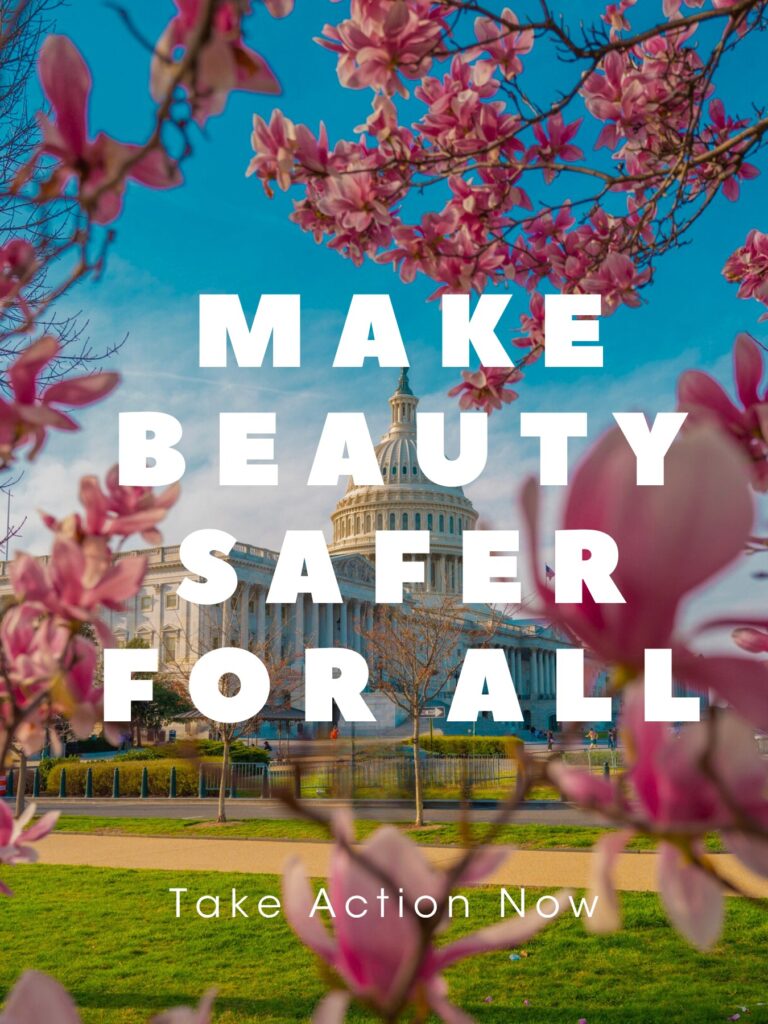


Take Action: Demand Safer Beauty for All
Did you know the European Union has banned over 2,400 toxic chemicals from personal care products? In comparison, the U.S. FDA has banned or restricted only 15 since the federal Food, Drug and Cosmetic Act became law in 1938. Every day, the average American uses 12 personal care products containing up to 168 unique chemicals – many of which are directly linked to harmful health effects.
Given the limited federal oversight and lack of beauty regulations, real change requires both consumer awareness and legislative action. Here’s how you can make a difference:
1. Support Federal Legislation
A package of four federal bills aim to make beauty and personal care products safer for everyone:
- The Toxic-Free Beauty Act: Bans 11 of the most toxic chemicals from beauty products
- The Cosmetic Hazardous Ingredient Right to Know Act: Requires disclosure of secret fragrance chemicals.
- The Cosmetic Safety for Communities of Color and Professional Salon Workers Act: Protects vulnerable populations most exposed to harmful chemicals.
- The Cosmetic Supply Chain Transparency Act: Mandates supply chain transparency so that cosmetic companies can get the information they need from upstream suppliers to make safer products.
Contact your representatives and urge them to support the Safer Beauty Bill Package.
2. Demand Corporate Accountability
- Call out brands that continue to use harmful ingredients
- Support companies committed to ingredient transparency
- Share your concerns on social media and through product reviews
3. Spread Awareness
- Share this information with friends and family
- Educate others about toxic ingredients in everyday products
- Join the Campaign for Safe Cosmetics email list for action alerts
4. Shop with Purpose
Your purchasing power matters. By choosing safer products and supporting transparent brands, you send a clear message to the beauty industry: we demand ingredient transparency and safer products for everyone.
The Bottom Line
We can’t just shop our way out of this problem. While making informed purchasing decisions is important, lasting change requires strong federal regulation of the cosmetics industry. Everyone deserves access to beauty products free from cancer-causing and hormone-disrupting chemicals, regardless of where they live, work, or shop.
Your voice matters. Together, we can transform the beauty industry and create a future where every product on the shelf is truly safe for people and the planet.

This guide was created by Vismai Chitriki, Marketing and Communications Intern, Campaign for Safe Cosmetics, a program of Breast Cancer Prevention Partners (BCPP).


